Programme

The Scientific Programme
The Scientific Programme is the result of a collaboration of the Scientific Programme Committee with the Organizing Committee and the Scientific Advisory Board.
The main interest is to guarantee the most selected and appropriate scientific contribution to the conference.
It has been ensured that the accelerator community is effectively represented in terms of its diversity and inclusion, there are contributions from 22 countries (including Ukraine), comprising 60 organisations, with 25% from female presenters.
The Scientific Programme foresees Invited Oral presentations (30 minutes), Contributed Oral presentations (20 minutes) and Poster presentations (available every afternoon from Sunday to Thursday).
The opening, prize and closing sessions will also be broadcasted through Internet.
The Synoptic Table of Scientific Programme is available for download in PDF version.
The Invited Speakers
Plenary sessions
R&D in Super-conducting RF: Thin Film Capabilities as a Game Changer for Future Sustainability – Claire Antoine, CEA
LCLS-II Commissioning Results – Axel Brachmann, SLAC National Accelerator Laboratory
LIPAc (Linear IFMIF Prototype Accelerator) beam commissioning & future plans – Kazuo Hasegawa, IFMIF
Accelerator Driven Systems – A Solution to Multiple Problems of Society – Yuan He, IMP Lanzhou
Accelerators for Particle Physics – Beate Heinemann, DESY
Elettra2.0 – Italy’s lightsource for science and outreach – Emanuel Karantzoulis, Elettra-Sincrotrone Trieste S.C.p.A.
Performance with the Upgraded LHC Injectors – Malika Meddahi, CERN
European Collaboration for the Realisation of ESS – Andrea Pisent, Istituto Nazionale di Fisica Nucleare
MC1 – Colliders and other Particle Physics Accelerators
Overall Status of the HL-LHC Project – Oliver Bruning, CERN
Higgs Factory Based on a Cool Copper Collider (C3) – Emilio Nanni, SLAC
Accelerator Physics Challenges for EIC – Vadim Ptitsyn, BNL
MC2 – Photon Sources and Electron Accelerators
Towards Sub-Ångström Working Regime of the European X-ray Free-Electron Laser: Simulations and First Experimental Results – Frank Brinker, DESY
Superconducting Undulators for Future Light Sources – Marco Calvi, Paul Scherrrer Institut
Towards a True Diffraction Limited Storage Ring Light Source – Lina Hoummi, ESRF
Outlook to Future X-FELs – Dong Wang, Shanghai Advanced Research Institute
MC3 – Novel Particle Sources and Acceleration Techniques
Towards COXINEL Seeded FEL Using Laser Plasma Accelerator at HZDR – Marie Emmanuelle Couprie, SOLEIL
EuPRAXIA and its Italian Construction Project – Massimo Ferrario, Istituto Nazionale di Fisica Nucleare
Laser-Plasma Acceleration beyond the Diffraction and Dephasing Limits – Cedric Thaury, Laboratoire d’Optique Appliquée
Fabrication and testing of corrugated Waveguides for a Collinear Wakefield Accelerator – Alexander Zholents, Argonne National Laboratory
MC4 – Hadron Accelerators
Last Commissioning Steps and Operation of the SPIRAL2 SC Linac – Angie Orduz, GANIL
The IFMIF-DONES Facility: A Fusion-Oriented 5 MW Superconducting CW Linear Accelerator – Ivan Podadera, DONES
J-PARC Main Ring Beam Operation with its High Repetition Rate Upgrade – Takaaki Yasui, High Energy Accelerator Research Organization
MC5 – Beam Dynamics and EM Fields
Electron Beam Test Facilities for Novel Applications – Deepa Angal-Kalinin, Science and Technology Facilities Council
SRF Cavities for Crabbing at the Electron-Ion Collider – Todd Satogata, TJNAF
Predicting Collective Dynamics and Instabilities in High-Brightness Storage Ring Light Sources – Ryan Lindberg, Argonne National Laboratory
A Deeper Look to Coherence in High Gain FELs: From Electron Intrabeam Scattering to Quantum Coherence – Giovanni Perosa, Università degli Studi di Trieste
Arbitrary Bunch Shaping via Wake Potential Tailoring – Young Dae Yoon, Pohang Accelerator Laboratory and Asia Pacific Center for Theoretical Physics
MC6 – Beam Instrumentation, Controls, Feedback and Operational Aspects
Timepix and Medipix Detectors and Their Applications – Michael Campbell, CERN
High-Beam Current Operation with a Digital Low-Level Radio Frequency System – Fu-Yu Chang, National Synchrotron Radiation Research Center
Two-Dimensional Electron Beam Size Measurements with X-ray Heterodyne Near Field Speckles – Mirko Siano, University of Milano
MC7 – Accelerator Technology and Sustainability
Completion of FAIR construction: Towards commissioning and First Science – Jörg Blaurock, GSI
The Short Model Program of HL-LHC Quadrupoles: Results, Potential and Challenges for Nb3Sn Accelerator Magnets – Paolo Ferracin, LBNL
Recent Progress in High Temperature Superconductor Magnet Technology – Seungyong Hahn, Seoul National University
Prospects for Future Facilities Based on Energy Recovery Linacs – Peter Williams, STFC
MC8 – Applications of Accelerators, Technology Transfer and Industrial Relations and Outreach
Accelerator Technology for Quantum Computing – Anna Grassellino, Fermi National Accelerator Laboratory
Treatment of “Forever Chemicals” in Wastewater with Electron Beams – John Vennekate, JLab






